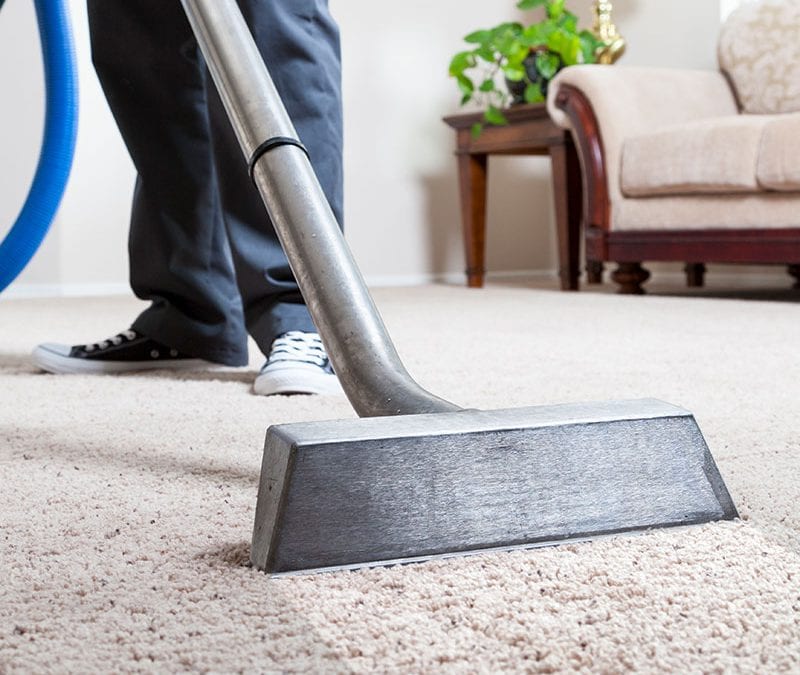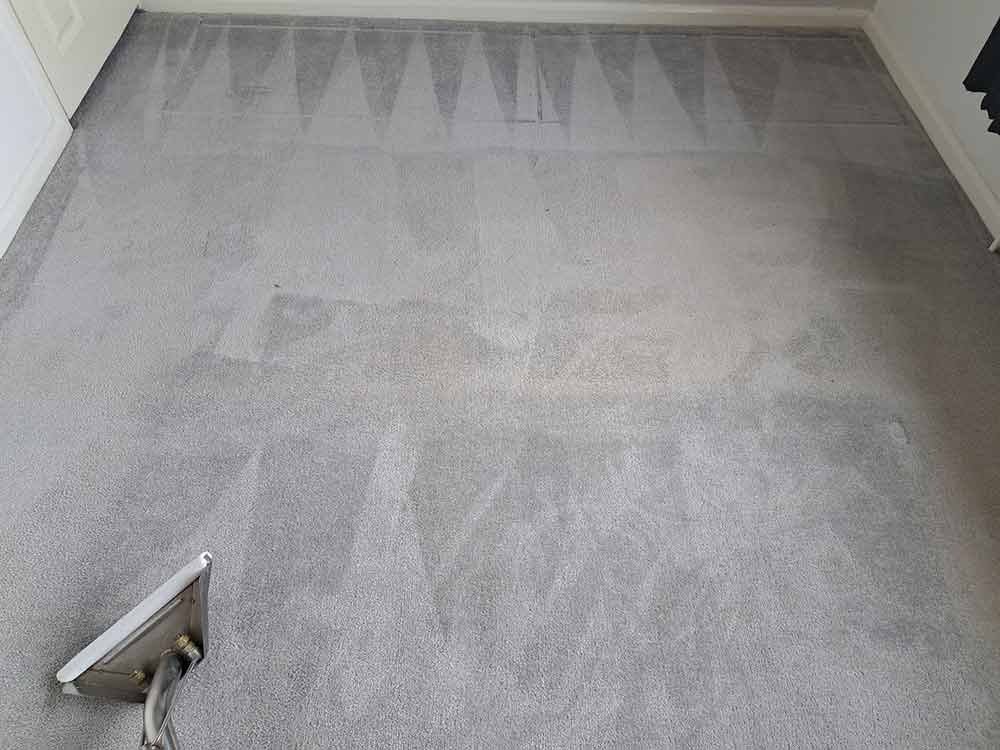Imagine you're in a meeting, and you accidentally knock over your coffee cup, spilling its contents all over the office carpet. You know that prompt action is essential to prevent that stain from setting, but what steps should you take next? Understanding the right techniques for removing coffee stains can save your carpet and maintain a professional appearance in your workspace. Let's explore some effective methods and tips to tackle those stubborn stains before they become a permanent fixture in your office.
Immediate Action Steps
When you spill coffee on your carpet, acting quickly can make all the difference in preventing a stubborn stain. Start by blotting the stain with a clean, dry cloth or paper towel to soak up excess liquid. Remember, rubbing can set the stain deeper into the fibers, so always blot from the outside in. Diluting the coffee with cold water helps, too. Pour small amounts onto the carpet and blot until no more coffee transfers to your towel.
If the spill has dried, scrape off any excess coffee grounds gently with a dull knife or spoon. Then, blot the area with a damp cloth to absorb the coffee-water mixture. Rinse with lukewarm water using a clean cloth or spray bottle, and blot again to remove moisture. Repeat this process until the stain starts to fade.
Always pre-test carpet for colorfastness in an inconspicuous area before trying any cleaning solutions. Avoid excessive wetness, which can damage the carpet. Taking swift action can significantly improve the chances of removing the stain, as 80% of carpet stains become harder to remove if untreated for over 24 hours.
Homemade Cleaning Solutions
- Vinegar Solution: Mix one part white vinegar with two parts cold water to break down coffee stains.
- Baking Soda Paste: Combine one part baking soda with three parts water to create a stain-lifting paste. Baking soda is a versatile compound with natural cleaning properties that can help neutralise odours as well.
- Dish Soap Solution: Blend one tablespoon of dish soap with two cups of warm water and one tablespoon of vinegar for stubborn residues.
- Rinse with Cold Water: After applying your solution, always rinse with cold water to remove cleaning agents.
- Microfiber Cloth: Use a microfiber cloth or non-abrasive sponge for blotting and applying your solutions effectively.
Application Techniques
To effectively tackle coffee stains, mastering the right application techniques is essential.
Start with immediate action: use dry cloths for initial blotting techniques to soak up as much liquid as possible. Apply gentle pressure to avoid spreading the stain into the carpet fibers, and remember to change cloths frequently to prevent reapplying the stain.
Next, dampen the stain with warm water to loosen the coffee. Gently dab the area with a clean cloth, starting from the edges and moving inward. Repeat this process until the stain fades, but avoid over-saturating the carpet.
When it comes to stain treatment with cleaning solutions, always test any product on an inconspicuous area first. Apply a detergent solution and let it sit for 3-5 minutes, or use undiluted white vinegar with a damp towel. Rinse thoroughly with cold water to remove any residue. It's important to note that not all stains can be completely removed, as some may require replacement of the carpet.
Finish by blotting excess moisture and weighing down a thick pad of white paper towels to absorb remaining liquid. Leave it overnight if needed, and avoid walking on the area until it's completely dry to prevent further staining.
Set-In Stain Removal
Set-in coffee stains can be particularly challenging to remove, but with the right approach, you can restore your carpet's appearance. Understanding the composition of coffee stains—oils, acids, and pigments—helps you tackle their stain persistence. Since these components can bind to carpet fibers over time, timely removal is essential.
Follow these steps for effective set-in stain removal:
- Lightly wet the stain with warm water to loosen dried coffee.
- Blot the area with a dry white cloth, moving from the edges inward.
- Mix a cleaner using dish soap, white vinegar, and warm water, then apply it.
- For stains containing cream or sugar, use enzyme laundry detergent mixed with warm water.
- Rinse the carpet with cool water and blot to eliminate excess moisture.
It's important to reflect on your cleaning frequency. Regular attention to stains can prevent them from setting in and becoming more difficult to remove. Additionally, regular cleaning can help maintain a healthy indoor environment by reducing allergens and bacteria.
If the stain remains stubborn, you might need to try commercial cleaners or consult a professional service, especially for delicate carpet fibers.
Prevention and Maintenance
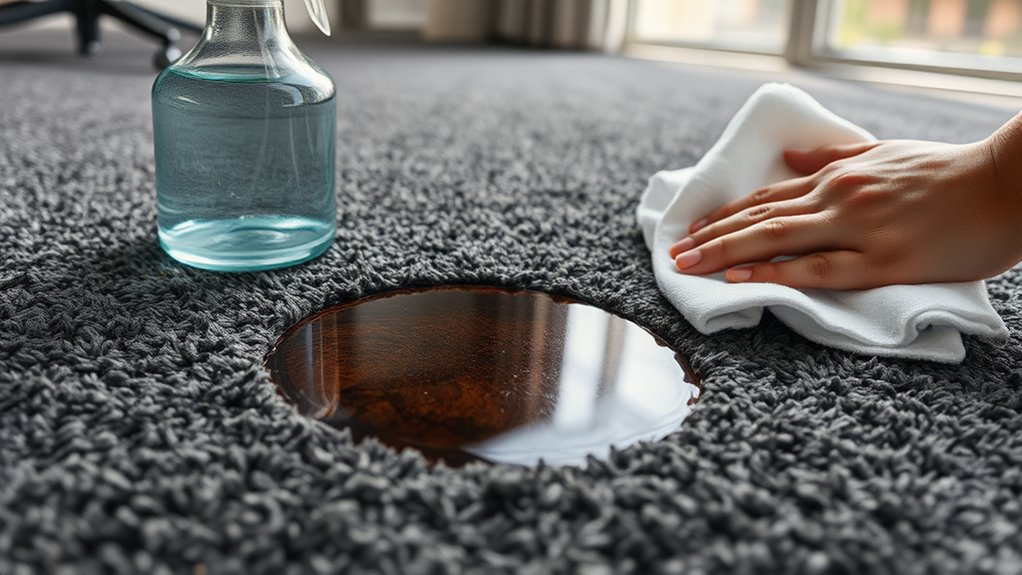
Maintaining a clean carpet is essential for both aesthetics and hygiene in any space, especially where coffee is consumed regularly. By implementing spill-proof strategies and proper maintenance, you can minimize the risk of stains and extend your carpet's lifespan.
Here are some effective prevention and maintenance techniques:
| Prevention Techniques | Maintenance Strategies | Additional Tips |
|---|---|---|
| Implement Coffee Stations | Schedule Professional Cleanings | Document Spills |
| Use Spill-Proof Lids | Establish Daily Cleaning Routines | Train Staff on Carpet Care |
| Conduct Regular Training | Inspect Carpets Regularly | Choose Eco-Friendly Cleaners |
| Promote Immediate Action | Use High-Quality Cleaning Products | Maintain Good Ventilation |
Designate specific coffee areas and encourage the use of spill-proof lids. Educate your staff on how to handle spills quickly and effectively. Regular professional cleanings and daily routines help keep carpets in top shape, making future stain removal easier. Additionally, using proper tools for cleaning can simplify maintenance and help keep carpets fresh.
Additional Tips
Taking proactive steps in prevention and maintenance can considerably reduce the chances of coffee stains setting in, but accidents can still happen.
When dealing with coffee stains, it's crucial to use the right cleaning tools and methods tailored to the stain types. Here are some additional tips to effectively tackle those pesky stains:
- Pre-test any cleaning solution on a hidden area of the carpet for colorfastness.
- Mix white vinegar with water to help break down the tannins in coffee.
- Apply the cleaning solution with a damp towel, letting it sit for 3-5 minutes.
- Avoid scrubbing or overwetting the carpet fibers to prevent further damage.
- Blot the area with a clean, dry towel after applying your solution.
For stubborn stains, consider using commercial products specifically designed for tough coffee stains. Additionally, utilizing specialized solutions can significantly enhance your stain removal efforts.
Remember, different carpet fibers react uniquely to various cleaning solutions, so always proceed with caution. Regular professional cleaning can also help maintain your carpet's appearance and prevent future stains from setting in.
Choosing the Right Materials
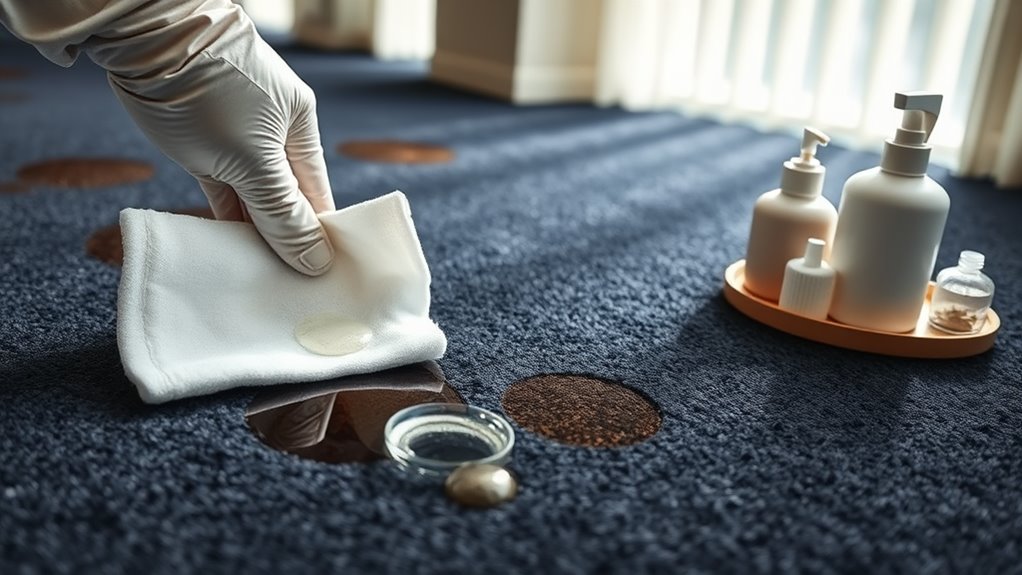
When it comes to successfully removing coffee stains from carpets, the right materials can make all the difference. Selecting appropriate cleaning agents and understanding your carpet's fabric types will enhance your cleaning efforts.
Here's a quick reference table to help you choose the right materials:
| Cleaning Agent | Ideal For | Fabric Type |
|---|---|---|
| Baking soda & water | Lifting stains from fibers | Most fabrics |
| White vinegar & water | Breaking down tannins | Nylon, polyester |
| Dish soap & water | Removing oily components | Loop carpets |
It's essential to use non-abrasive tools like microfiber cloths and sponges to avoid damaging your carpet. For specialized carpets, consider stain-resistant options made of nylon or polyester for easier cleaning. Loop or low-pile carpets also require less maintenance. Additionally, knowing that certain stains may be difficult to remove can help set realistic expectations when tackling coffee spills.
Don't forget to keep a carpet protector spray handy to prevent future stains. Using cold water for rinsing helps maintain the integrity of your carpet fibers. By choosing the right cleaning agents and understanding fabric types, you'll be well-equipped to tackle those pesky coffee stains effectively.
When to Seek Professional Help
Choosing the right materials for cleaning coffee stains can set you on the path to success, but there are times when DIY methods just won't cut it.
If you find that your efforts aren't yielding results, it's crucial to think about professional help. Here are some signs it's time to call in the experts:
- Repeated cleaning attempts fail: If the stain persists after multiple tries, seek professional recommendations.
- Deeply embedded stains: Stains that have settled into the carpet fibers often require specialized equipment for effective removal.
- Permanent damage indicators: Discoloration or changes in texture signal that the stain may be irreversible.
- Complex stain composition: Stains with sugars or oils are particularly challenging and often need professional assessment.
- Risk of spreading: Ignoring a stubborn stain can cause it to spread, making the situation worse.
Professional cleaners can conduct a thorough stain assessment and employ advanced techniques to restore your carpet. Furthermore, they use specialized cleaning equipment to ensure a deep clean that DIY methods often miss.
They guarantee that the cleaning process won't damage your carpet, prolonging its lifespan and maintaining the professional look of your office space.
Testing Cleaning Solutions
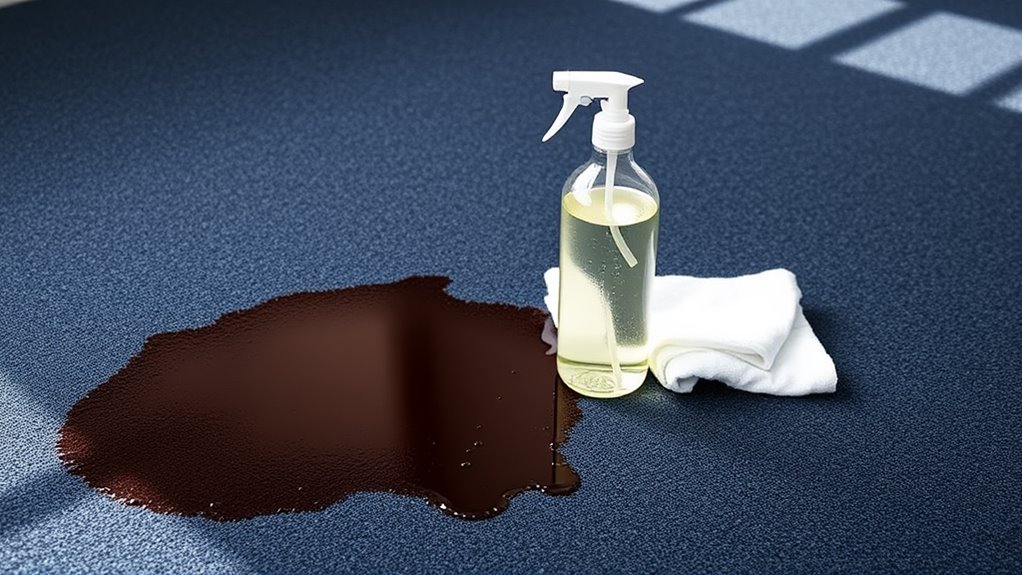
Testing cleaning solutions is an essential step in effectively removing coffee stains from carpets. Start by applying measured amounts of coffee to white nylon carpet squares, simulating real-life stain types. Follow the product's label directions, noting how quickly and thoroughly it works, the amount of suds produced, and the ease of rinsing.
For homemade solutions, a baking soda paste can lift stains, while a vinegar and water solution breaks down tannins. Using dish soap and water can target oily components of coffee, and undiluted white vinegar may enhance cleaning effectiveness. Hydrogen peroxide can also be effective, as it destroys melanoidin molecules responsible for the stain. Regular maintenance can prolong carpet life and appearance, making it crucial to address stains promptly.
Always act quickly and blot spills with a dry cloth to prevent spreading. When applying cleaning solutions, do so carefully without rubbing, and use lukewarm water for rinsing. A wet/dry vacuum can help extract the solution, preventing wicking back into the carpet fibers.
Finally, test alternative solutions like toothpaste or salt on a small, hidden area first to verify compatibility with your carpet type. Repeat cleaning and rinsing until the stain fades, and assess the cleaning effectiveness throughout.
Long-Term Carpet Care
To maintain the beauty and longevity of your carpets, implementing a long-term care strategy is crucial. With proper techniques and regular maintenance, you can guarantee peak carpet preservation. Here are some key practices to adopt:
- Vacuum regularly to prevent soil and dust from embedding into the fibers.
- Use walk-off mats outside doorways to absorb dirt and moisture.
- Invest in a quality carpet pad to enhance resilience and extend carpet life.
- Move furniture periodically to prevent pile crushing and keep your space looking fresh.
- Change air filters frequently to reduce airborne dust settling on carpets.
In addition to these preventative measures, schedule professional deep cleanings every 12 to 18 months. This not only removes embedded dirt but also helps maintain your carpet warranty. Regular cleaning is essential in high-traffic areas to prevent dirt from embedding in carpet fibers.
Remember to use SOA-certified cleaners to protect your investment. Immediate attention to spills and routine spot cleaning will also prevent lasting damage.
Frequently Asked Questions
Can Coffee Stains Damage Carpet Fibers Permanently?
Yes, coffee stains can permanently damage carpet fibers. The coffee composition, including tannins, penetrates deep, complicating stain removal. Immediate action is essential to prevent lasting marks and protect your carpet's integrity.
What Types of Carpets Are Most Stain-Resistant?
While nylon carpets offer durability and stain resistance, polyester fibers naturally repel water-based stains even better. If you want the best stain-resistant carpet, consider triexta for its impressive resilience in high-traffic areas.
How Can I Remove Odors From Coffee Stains?
To remove odors, use odor neutralizers like vinegar or baking soda during carpet cleaning. Blot the area, apply a cleaning solution, and guarantee thorough drying to prevent lingering smells from coffee stains.
Is It Safe to Use Bleach on Coffee Stains?
Using bleach on coffee stains isn't always safe; it can cause discoloration. Instead, consider bleach alternatives like vinegar or enzyme-based detergents for effective stain removal. Always test a hidden area first to avoid damage.
How Do I Prevent Coffee Spills in the Office?
To prevent coffee spills in the office, use lids on cups, choose appropriate sizes, and place coasters on surfaces. Consider coffee alternatives, too; they can help reduce both spills and caffeine-related accidents.
Conclusion
In the battle against coffee stains, acting swiftly can make all the difference. By using simple homemade solutions and proper techniques, you can restore your office carpet to its former glory, much like a knight reclaiming their kingdom. Remember, regular maintenance and knowing when to call in the professionals are key to keeping your carpets pristine. Don't let coffee stains become your carpet's Achilles' heel—take action and enjoy a clean, inviting workspace.

